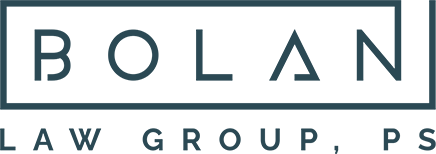The specific type of liability insurance required for your property varies, depending on the stipulations set forth in your lease agreement. Generally speaking, the most commonly executed risk allocation framework is that landlords of retail properties are obligated to provide commercial general liability, commonly referred to as “CGL” coverage, for the given property’s common areas, and for the tenant or tenants to provide similar CGL coverage inside the leased premises.
If you are a business owner, whether a tenant or landlord, in the Bonney Lake area, it is essential for you to consult with a knowledgeable and competent business and real estate attorney. The attorneys at Bolan Law Group., can explain the nuanced and complex insurance policies applicable to your unique circumstances and provide you expert legal counsel regarding your legal options and potential issues that may arise.
Understanding Commercial General Liability (CGL) Coverage
CGL is a category of insurance policy that offers coverage to an entity for bodily injuries, personal injuries, and property damage incurred as a result of the entity’s business operations or products. This type of insurance is generally considered comprehensive business insurance. However, it may not cover all of the risk associated with operating a business.
Commercial General Liability insurance policies are an essential protective asset for corporate policyholders, providing broad defense and indemnity coverage related to claims involving bodily injury and property damage. CGL policy agreements are usually drafted on standard policy documents generated by large national insurance industry entities. Due to the fact that CGL policy forms are produced by sophisticated insurance industry authors, the courts in a majority of jurisdictions construe any ambiguous terms or provisions in favor of the policyholder.
While there may be some slight differences in the exact language, the standard primary CGL policy agreement typically reads as follows:
The Company will pay on behalf of the insured sums which the insured shall become legally obligated to pay as damages because of bodily injury or property damage to which this insurance applies caused by an occurrence and the Company shall have the right and duty to defend any suit against the insured seeking damages on account of such bodily injury or property damage…
As the preceding language implies, the policy is triggered by the occurrence of bodily injury or property damage that happens during the policy’s time window. When a policy is triggered, the insurer has two obligations: defense and indemnification. The insurer’s defense obligation is defined by comparing the complaint’s allegations with the coverage provided by the applicable policy terms. If even a single claim might fall under the coverage, the insurer typically must defend the entire action – even when the underlying lawsuit or claim is groundless, false, or contains elements of fraud. The indemnification obligation is based on the actual facts of the claim and usually arises from the entity holding the policy having to pay damages after a judgment or settlement. If a policyholder wishes to settle a claim, most policies mandate them to first get the insurer’s approval or risk losing coverage for the settlement amount.
CGL policies vary in the level of coverage they provide. A given policy may incorporate premises coverage protecting the entity from claims that take place in the company’s physical premises during the hours of normal business activity. It may further include coverage for injuries and damaged property resulting from finished products. Excess liability coverage may be available for purchase at a higher rate in order to offer coverage for claims exceeding the cap of the CGL policy in question. Additionally, it is common for boilerplate CGL policies to exclude certain scenarios and actions from the coverage.
When shopping for a CGL plan, it is vital for you and your business to make the distinction between a claims-made policy and an occurrence policy. A claims-made policy offers coverage for a set period of time and covers only claims initiated during that window – regardless of whether the underlying event or accident that serves as the basis for the claim took place outside the specified timeframe. Alternatively, an occurrence policy differs in that it covers claims as long as the associated event took place during a stipulated time frame and does not provide coverage for claims originating from accidents that happened before the policy was implemented.
On top of CGL plans, entities might also buy additional add-on policies that offer coverage for a larger scope of risk scenarios and accidents. For example, the company may acquire an employment practices liability policy in order to cover claims related to sexual harassment situations, wrongful termination disputes, and employment discrimination. It may also choose to buy another policy in order to cover mistakes and omissions found in financial reporting statements, as well as coverage for damages that result from the illegal or improper actions taken by its executives and officers.
Based on its day-to-day operational requirements, a commercial entity may also wish to name affiliated companies or individuals as “additional insured” parties under their CGL and any additional policy agreement documentation. This scenario is commonly seen when businesses choose to enter into a contractual agreement with each other that mandates the insuring party to name the additional entity as “additional insured” on their policy agreement. For example if a housekeeping company enters into a contractual agreement with XYZ, Inc., to provide maintenance and cleaning services for their resorts, XYZ, Inc., may request the housekeeping company to add XYZ, Inc., as an additional insured party on their CGL coverage documentation in order to sufficiently protect their interests.
Another significant aspect of many CGL coverage policies is that they are drafted with a per occurrence limit for all bodily injury and property damage claims. Liability claims have a yearly aggregate for all claims stemming from events within a specific policy year. If the aggregate limit is maxed out in a given annual term, an umbrella policy is required to offer continued coverage for any other potential claims that would exceed the original annual aggregate cap.
Trustworthy & Effective Bonney Lake Real Estate Attorneys
Purchasing the correct insurance coverage plan for your specific business or property is a major decision that should not be made without first consulting an experienced real estate and business attorney who can assist you in understanding the various options you have and the potential implications your decisions will have in the future. The experienced real estate and business attorneys at Bolan Law Group., are ready and willing to address all of your real estate and business questions and set you up for lasting success. Give us a call or contact us online today.

